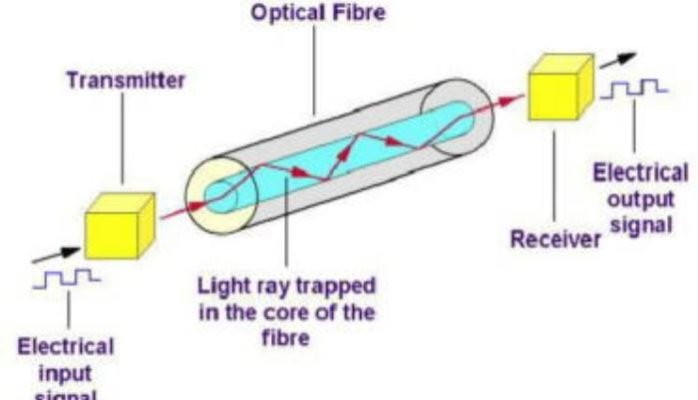
Optical Fiber and Communication
Communication is the process or activity of expressing ideas and feelings i.e transfer of information by speaking, writing or using any kinds of medium. As a human being communication is vital aspect of our lives. There are different ways of communication in our modern era; even there were also various forms of communication existed since man came into the Earth. Cave painting was one of the most known communication form in the primitive time when man used juice of fruits, coloured minerals or animal blood as the pigments. They also used drums and smoke signal to communicate with other. In 4th century BCE pigeon was also used to carry information. Before invention of printer (1448) hand-writing documents or books were used rapidly. It is relevant to say, in 1876; Alexander Bell invented telephone which revolutionized in the communication system. We have seen numerous numbers of well-known devices or system to be invented that made our communication more realistic and easy. For examples radio (1916), photography, television (1939), cell phone, internet, Email, social media and blogging etc. In our modern world we use different kinds of technologies for communication but optical fiber communication is the most important one.
Now I am going to say some information related to optical fiber communication. In optical fiber communication data of information (data, voice, video) is transmitted as light pulses. Optical fiber is widely used in telecommunication as more data is carried compare to metal (copper) wire and it is free from electromagnetic interference and no need to retransmit the signal.
The optical communication systems are operated in the wavelength range from 1.3 to 1.6μm. Optical fibers made of silica are acted in this range because it has low attenuation loss (~0.2dB/km) at the wavelength 1.55μm and the material dispersion vanishes around the wavelength 1.3μm. Optical communication systems using single-mode fibers are preferable to communication systems for long distance communication of large information with minimum number of repeaters to communication systems comprising multimode. Attenuation and dispersion are very important factors for improving guidance in the fiber. The finite spectral width of the available source causes broadening of a particular mode. This is known as intermodal dispersion or chromatic dispersion which is written as a sum of waveguide dispersion, material dispersion and composite profile dispersion. This material dispersion is due to the dependence of the core and cladding refractive indices on the wavelength while the waveguide dispersion is caused by dependence of propagation constant on the wavelength. The composite profile dispersion is found to be proportional to the derivative of relative core-cladding refractive index difference with respect to wavelength. This dispersion is very small such as less than 0.5ps/ (km nm), thus it can be neglected for all practical purposes. Again, the waveguide dispersion can be made to cancel the material dispersion at any wavelength by a suitable choice of fiber parameters. Thus in case of standard fibers, the function of the waveguide dispersion is to shift the zero total dispersion wavelength towards the longer wavelength side in comparison to the zero material dispersion wavelength which is around 1.274 μm for silica. Generally the zero dispersion wavelength is displaced to 1.55μm. This type of fiber is called dispersion shifted fiber. Again, another type of fiber which has almost nil dispersion over a range of wavelengths is known as dispersion flattened fiber. In case of such fibers we can increase the information carrying capacity by wavelength division multiplexing. In a step-index multimode fiber, dispersion is typically about 50ns/km.nm which means that its bandwidth is about 20MHz. km.
Optical fiber communication is used in various fields namely field of computers, Public network field, military purpose, civil, consumer and industrial application, medical field and so on.